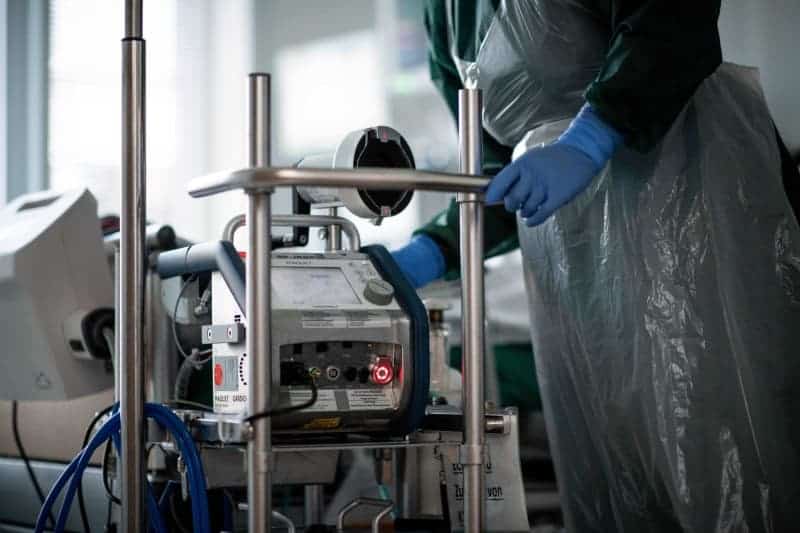DPA

Researchers have discovered abnormalities in the lungs of long Covid patients who have breathlessness which cannot be detected with routine tests.
The Explain study uses xenon, an odourless, colourless, tasteless and chemically non-reactive gas, to investigate possible lung damage in the patients who have not been admitted to hospital, but continue to experience the symptom.
The initial results of the study suggest there is significantly impaired gas transfer from the lungs to the bloodstream in the long Covid patients despite other tests – including CT scans – coming back as normal.
The study’s chief investigator, Fergus Gleeson, professor of radiology at the University of Oxford and consultant radiologist at Oxford University Hospitals NHS Foundation Trust, said: “We knew from our post-hospital Covid study that xenon could detect abnormalities when the CT scan and other lung function tests are normal.
“What we’ve found now is that, even though their CT scans are normal, the xenon MRI scans have detected similar abnormalities in patients with long Covid.
“These patients have never been in hospital and did not have an acute severe illness when they had their Covid-19 infection.
“Some of them have been experiencing their symptoms for a year after contracting Covid-19.
“There are now important questions to answer. Such as, how many patients with long Covid will have abnormal scans, the significance of the abnormality we’ve detected, the cause of the abnormality, and its longer-term consequences.
“Once we understand the mechanisms driving these symptoms, we will be better placed to develop more effective treatments.”
In the study, the patients were required to lie in an MRI scanner and breathe in one litre of the gas that has been tweaked so that it can be seen using MRI.
Because xenon, which is safe to inhale, behaves in a very similar way to oxygen, radiologists can observe how it moves from the lungs into the bloodstream.
The scan takes just a few minutes and, as it does not require radiation exposure, can be repeated over time to see changes to the lungs.
While the full Explain study will recruit about 400 participants, the initial pilot had 36 participants making up three groups.
This included those diagnosed with long Covid who had been to long Covid clinics and who had normal CT scans, and people who had been in hospital with coronavirus and discharged more than three months ago, who had normal or nearly normal CT scans and who were not experiencing long Covid.
The third group was an age and gender-matched control group who did not have long Covid symptoms and were not admitted to hospital with the virus.
Dr Emily Fraser, respiratory consultant who leads the Oxford Post-Covid Assessment Clinic, said: “These are interesting results and may indicate that the changes observed within the lungs of some patients with long Covid contribute to breathlessness. “However, these are early findings and further work to understand the clinical significance is key.”
Asked what people suffering from the symptom can take from the findings, she added: “I think that the message should be that we are actively researching what is driving long Covid.”
But Fraser also said people should not give up on the current exercises and rehab they are working on, as this is also helpful. The method and clinical applications were developed by Professor Jim Wild and the Pulmonary, Lung and Respiratory Imaging Sheffield (Polaris) research group at the University of Sheffield.
“Xenon follows the pathway of oxygen when it is taken up by the lungs and can tell us where the abnormality lies between the airways, gas exchange membranes and capillaries in the lungs,” Wild said.
The study, which received Government funding, is supported by the NIHR Oxford Biomedical Research Centre (BRC). The findings, which have not been peer-reviewed, were posted on the bioRxiv pre-print server.



